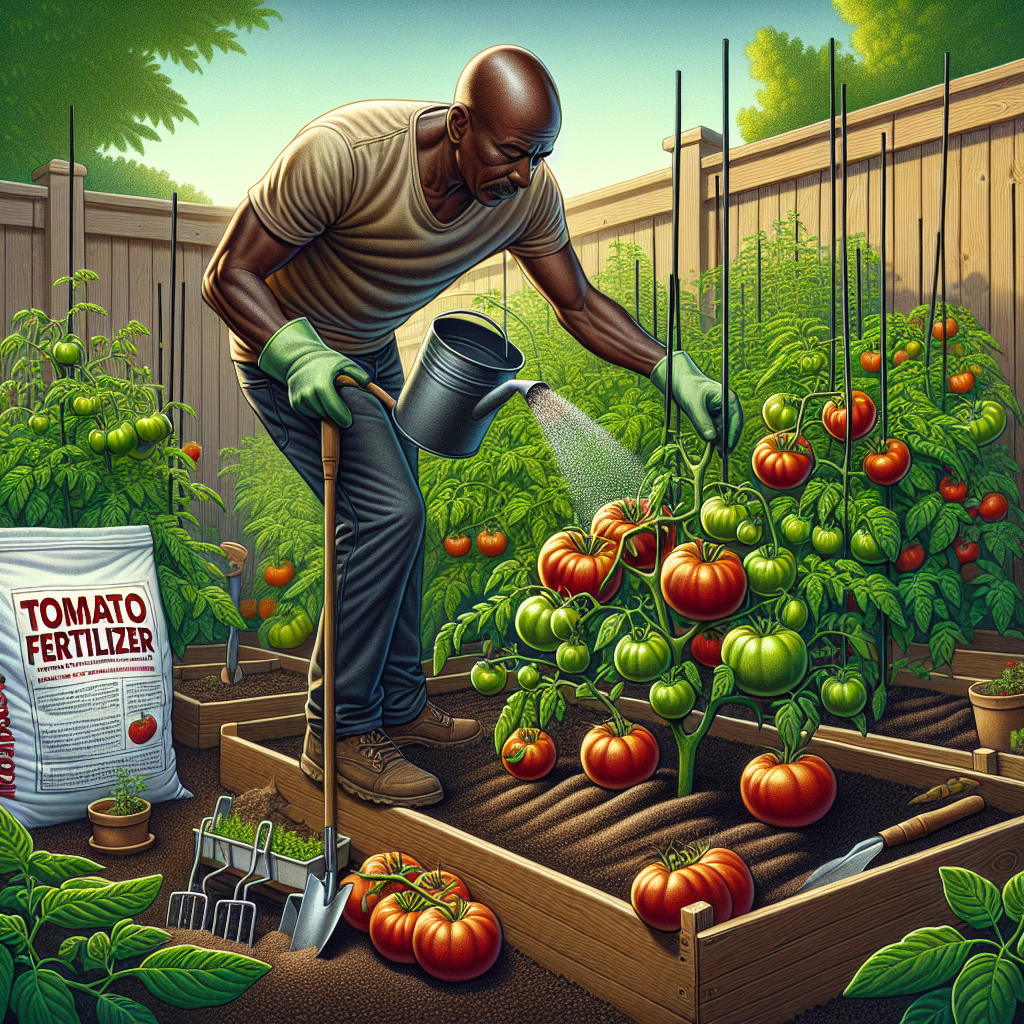
How do you fertilize tomatoes
How to Grow Healthy Tomatoes: A Comprehensive Guide to Fertilizing
When it comes to growing juicy, flavorful tomatoes, nourishment is key. Every gardener wants to know, how do you fertilize tomatoes? Understanding the timing, type of fertilizers, and techniques can make a significant difference in yield and taste. This article delves into the essential aspects of fertilizing tomatoes, from the basics to advanced techniques that guarantee success.
The Importance of Fertilizing Tomatoes
Tomatoes thrive on nutrients, enabling their growth and enhancing their taste. Fertilizing your plants properly can lead to:
- Higher yield
- Better fruit quality
- Stronger plant structure
- Increased disease resistance
The key is to ensure that your tomato plants receive a balanced diet throughout their growing season.
Understanding Tomato Nutritional Needs
Tomatoes require three primary macronutrients:
- Nitrogen (N): Supports leaf growth.
- Phosphorus (P): Encourages root development and fruit set.
- Potassium (K): Enhances fruit quality and disease resistance.
Besides these macronutrients, tomatoes also have micronutrient requirements, including calcium, magnesium, and iron, which contribute to overall plant health and fruit quality.
Choosing the Right Fertilizer for Tomatoes
When contemplating how do you fertilize tomatoes, selecting the appropriate fertilizer is crucial. There are several types of fertilizers available:
1. Synthetic Fertilizers
These fertilizers are chemically engineered to deliver specific nutrients. They are fast-acting and can be tailored to the exact nutrient needs of tomatoes.
2. Organic Fertilizers
Organic options like compost, manure, and fish emulsion provide a slow release of nutrients. They enhance soil structure and promote healthy soil microbiomes.
3. Slow-Release Fertilizers
These fertilizers release nutrients gradually over time, ensuring a steady supply for the plants. This option is particularly useful for busy gardeners who may forget regular feedings.
4. Liquid Fertilizers
Liquid fertilizers can be mixed with water and applied directly to the soil or foliage. They provide a quick nutrient boost when plants exhibit deficiencies.
Timing Your Fertilization
Successful fertilization depends on timing. Here’s a guideline that you can follow:
- Pre-Planting: Before planting, enrich the soil with organic matter and a balanced fertilizer. This foundation will support initial growth.
- Growing Stage: Fertilize young plants every 4-6 weeks with a nitrogen-rich fertilizer until they start fruiting.
- Fruit Set: Once fruits start to form, switch to a fertilizer higher in phosphorus and potassium to enhance fruit quality and size.
Understanding the growth stages will help in applying the right type of fertilizer at the right time.
Applying Fertilizer: Techniques for Success
Soil Application
When using granular fertilizers, consider these steps:
- Apply fertilizer in a circular pattern, about 6-12 inches from the base of the plant.
- Lightly work the fertilizer into the top few inches of soil.
- Water the area thoroughly to help dissolve the fertilizer and make it available to the roots.
Foliar Feeding
Foliar feeding can be beneficial if your plants show signs of nutrient deficiency, such as yellowing leaves. Here’s how to do it:
- Dilute liquid fertilizer according to package instructions.
- Using a spray bottle, cover both the top and undersides of the leaves.
- Apply during the early morning or late afternoon to prevent leaf burn.
Compost Tea
Using compost tea provides a gentle nutrients boost, helping with soil health. To prepare compost tea:
- Add a bag filled with compost to a container of water and let it steep for 24-48 hours.
- Strain out the solids and apply the tea directly to the soil around the plant.
Signs of Nutrient Deficiency
Knowing what signs to look for can help you quickly adjust your fertilization strategy. Here are common deficiencies in tomatoes:
| Nutrient Deficiency | Symptoms |
|---|---|
| Nitrogen | Yellowing leaves, especially older ones; stunted growth. |
| Phosphorus | Dark green or purplish leaves; slow growth. |
| Potassium | Yellowing between leaf veins; browning leaf edges. |
| Calcium | Blossom end rot; stunted growth. |
Conclusion
Understanding how do you fertilize tomatoes can transform your gardening experience, leading to bountiful harvests. By selecting the right fertilizers, timing their application, and recognizing signs of deficiencies, you can ensure your tomato plants are healthy and productive.
Getting it right might take some practice, but with patience and care, you'll be rewarded with some of the best-tasting tomatoes imaginable. Happy gardening!
By Guest, Published on October 7th, 2024